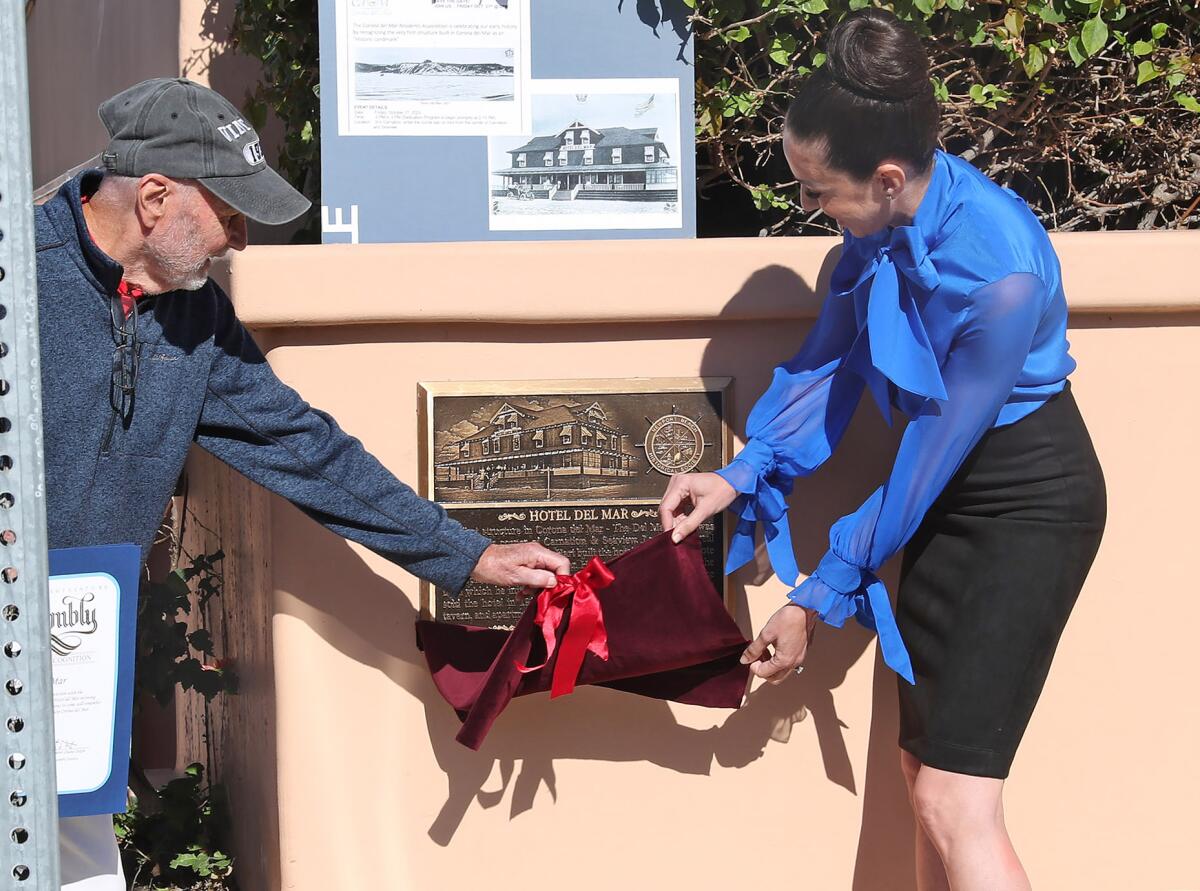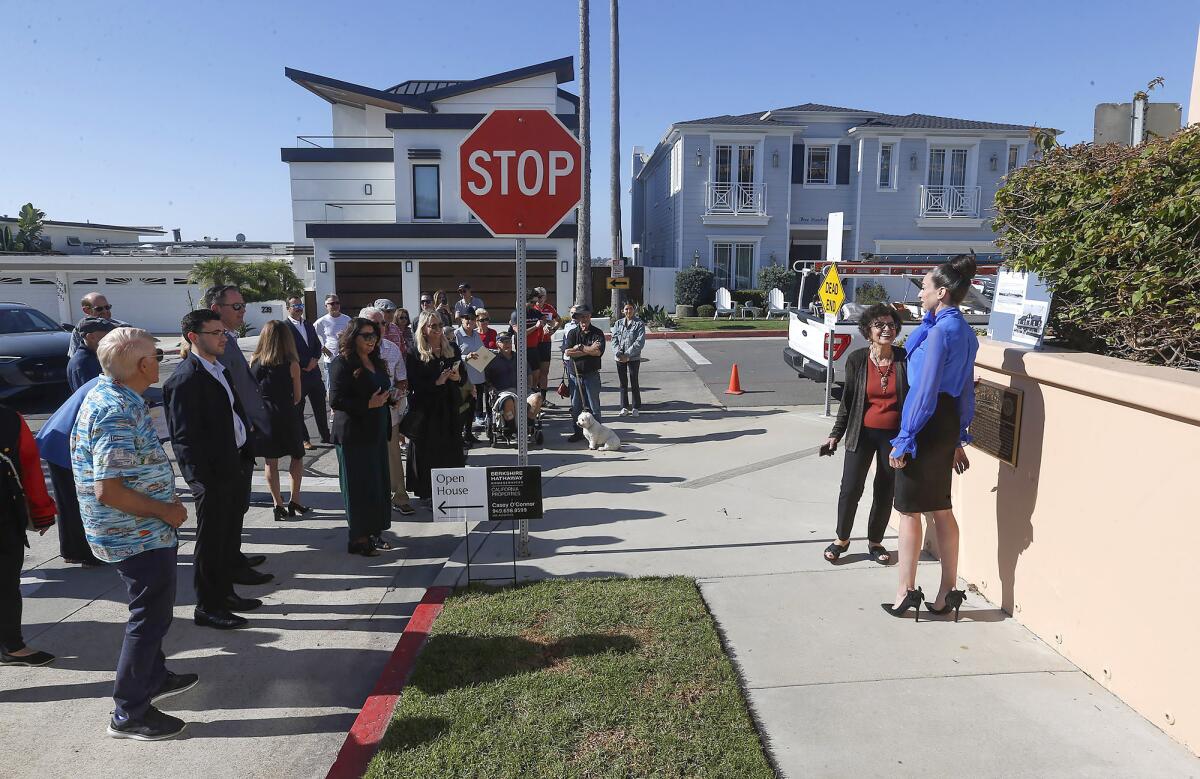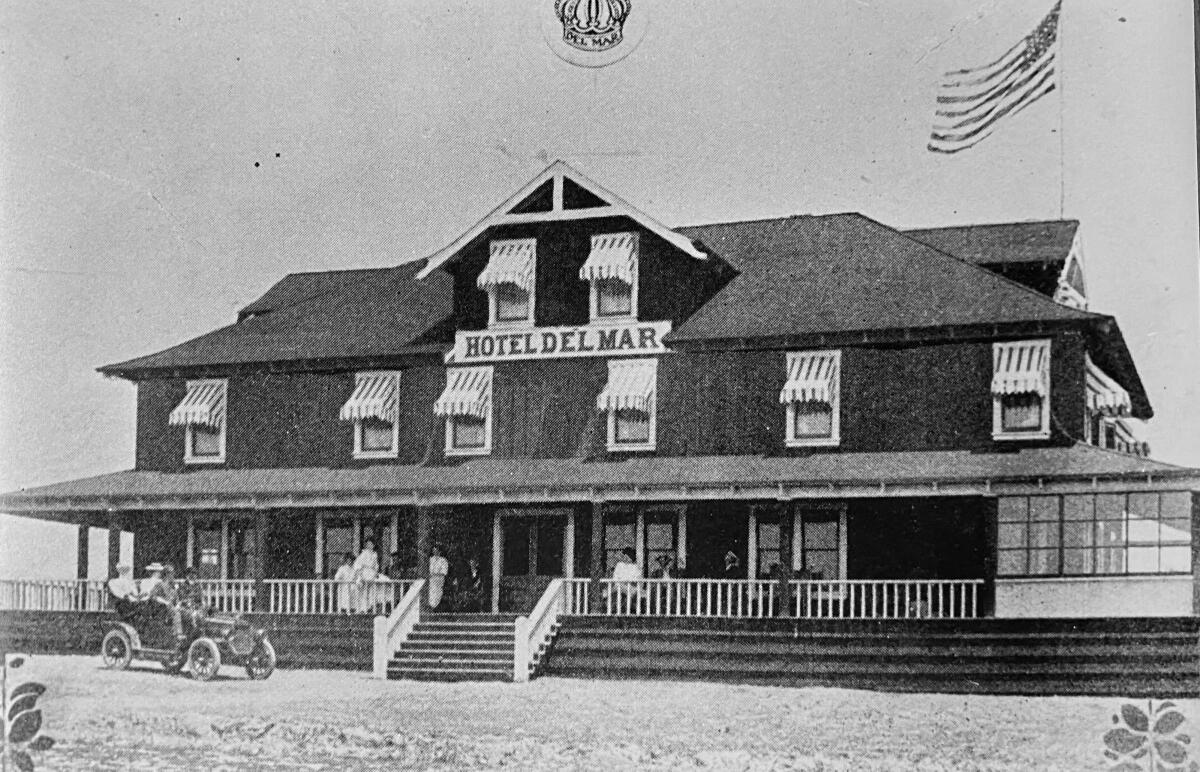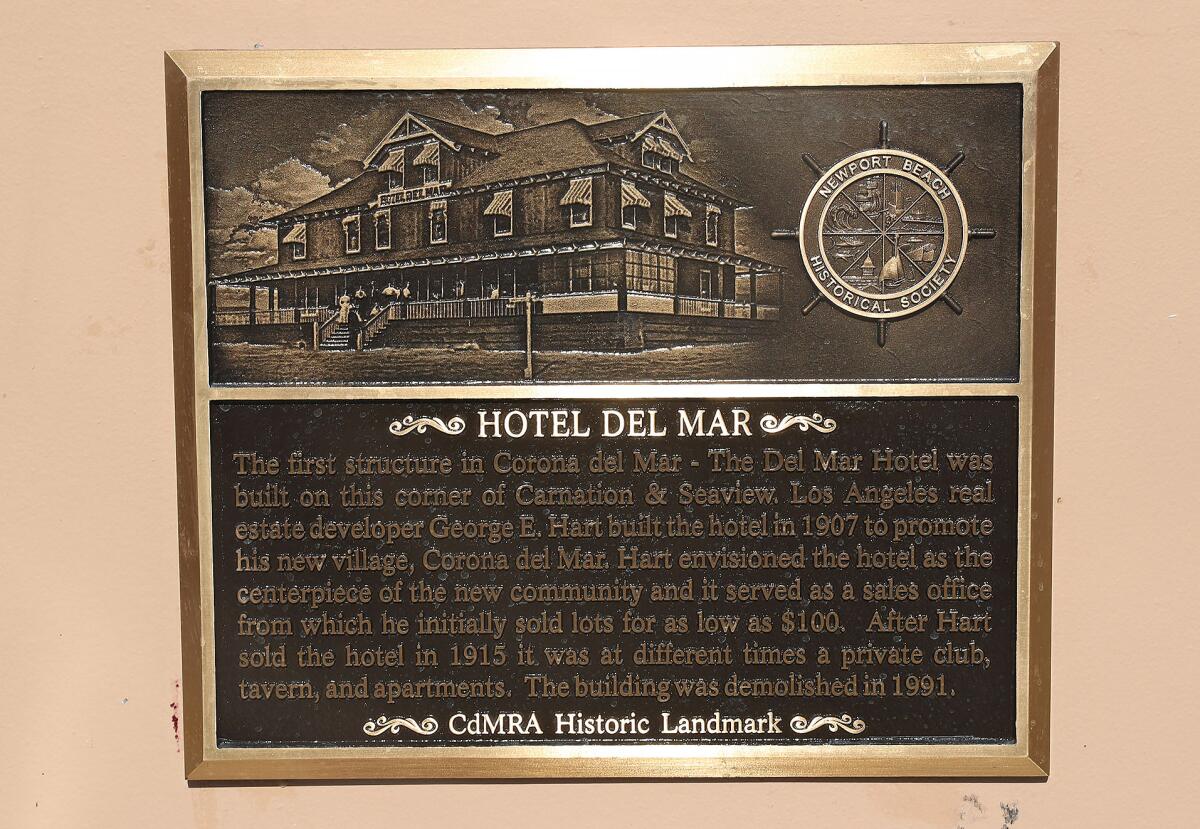Hotel del Mar receives historical designation years after its demolition

- Share via
It’s hard to believe that little over a century ago there was nothing on the acreage where bustling Corona del Mar sits today.
In fact, when Hotel del Mar opened on July 20, 1907, it was the only building in sight and remained so for a few years.
“It was basically vacant land, but vacant land you couldn’t give away,” joked Nancy Gardner, a former mayor of Newport Beach. “I mean, it was like Gertrude Stein’s Oakland. There was no there there, but what [the Hotel del Mar] did was introduce the area to a lot of people and began the transformation from ‘Oh no, we don’t want your property’ to ‘We can’t afford the property.’”
On Friday, about 30 years after its demolition and more than a century since it was built, the Hotel del Mar — or at least the land where it once stood — was designated a historic landmark due to the collaborative efforts of residents, the Corona del Mar Residents Assn. and the Newport Beach Historical Society.
Ron Yeo, chair of the association’s historic resources committee, said talks to bestow the historical designation at the site, now home to the Palisades condominium complex on Carnation Avenue, date back at least eight years. But talks stalled when the question of money came up. It was at the encouragement of resident Kent Moore that the association finally took up the charge of fundraising for the plaque itself at the start of 2023. Six donations of $300 each later, the moment finally arrived Friday.

Corona del Mar’s existence largely is credited to George Hart, who in 1904 partnered with Henry Huntington, owner of the Pacific Electric Railway, to purchase 700 acres of land to develop what he considered “the jewel of the sea.”
But development of the area was difficult, according to information preserved at the Sherman Library & Gardens that was recounted at the dedication by library director Jill Thrasher.
As things turned out, Huntington never expanded the electric railway to Corona del Mar, and it stopped at the Balboa Pavilion. Another challenge in marketing the land was that it was relatively barren and lacked fresh water. Sales were low, and Hart was on the hook for the property. The Corona del Mar Historical Assn. said that roughly half of the 700 acres were returned to the Irvine Co., and Hart developed what would eventually become Hotel del Mar.

In 1910, three years after the hotel opened for business, the first Corona del Mar houses were built by Mary Everett and Alice Alden, two friends who had come south from Pasadena. By 1915, a dozen more homes were built, and by 1916, Hart abandoned his investment in the community and sold the remaining 400 acres to F.D. Cornell Co. for 5,000 acres in Riverside County.
Corona del Mar was annexed by Newport Beach in February 1924, which allowed for needed city services.
The hotel changed hands and was remade into the Balboa Palisades Club, then a hotel again before it eventually became the Palisades Apartments in the 1960s, which stopped operating in 1987, according to Thrasher’s research. By 1991 the structure was razed and afterwards faded into memory.

“I think one of the big problems with the way we look at history and, particularly in Corona del Mar, is that it took place in the 20th century and that’s just not old enough. It doesn’t ‘qualify’ as history. Most of us were born in the 20th century. How could that be history? But, I think part of that is why we lost a lot of our history,” Gardner said. “We didn’t pay much attention. That’s changing, and we are, at least for the last decade, memorializing so much of our past.”
The plaque dedicated Friday sits on the side of the condominium complex along Seaview Avenue.
“It is important, of course, as we’ve heard, to acknowledge the seeds of our past that have cultivated everything that we know and love about the Corona del Mar of the present and ... to commemorate our rich history for all the generations to come,” said Councilwoman Lauren Kleiman, who represents Corona del Mar on the City Council. “This is such a special place that I think even George Hart himself probably could not have envisioned. I know we’re all just so grateful to be able to appreciate it.”

All the latest on Orange County from Orange County.
Get our free TimesOC newsletter.
You may occasionally receive promotional content from the Daily Pilot.




